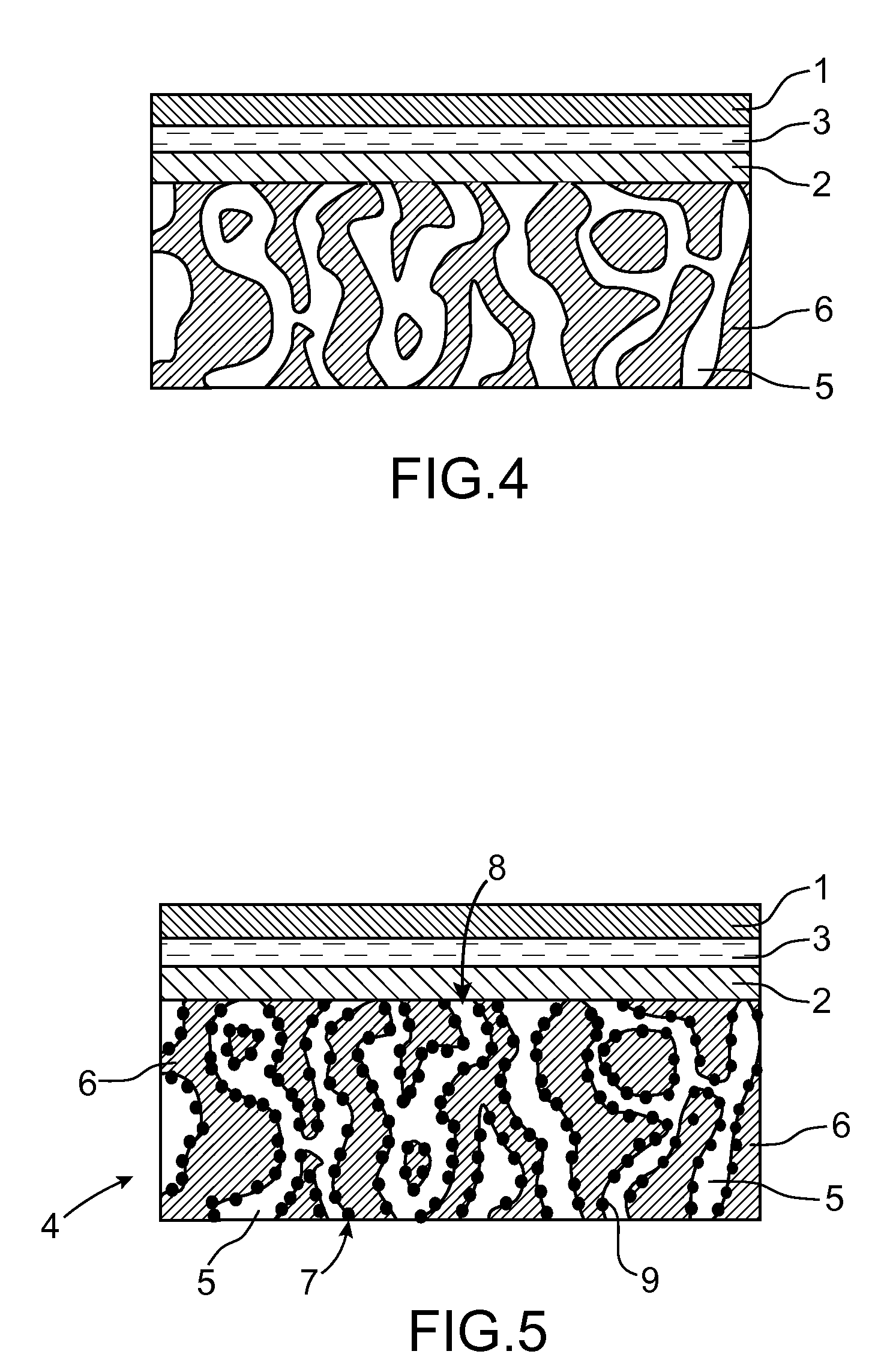Cell of a high temperature fuel cell with internal reforming of hydrocarbons
a fuel cell and high temperature technology, applied in the field of high temperature solid oxide fuel cells, can solve the problems of slow corrosion of porous metallic supports, increase the volume and complexity of the entire plant, and complicate its us
- Summary
- Abstract
- Description
- Claims
- Application Information
AI Technical Summary
Benefits of technology
Problems solved by technology
Method used
Image
Examples
Embodiment Construction
[0117]The detailed description which follows is rather given, for ease, with reference to a process for preparing or manufacturing the cell according to the invention.
[0118]It is firstly specified that the term “porous” as it is used in the present text in relation to a material such as a metal or a metal alloy means that this material contains pores or voids.
[0119]Consequently, the specific gravity of this porous material is less than the theoretical specific gravity of the nonporous material.
[0120]The pores may be linked or separate, but in the porous metallic substrate according to the invention the majority of the pores are linked, in communication. This is then referred to as open porosity.
[0121]Generally, in the porous metallic support of the invention, the pores are percolating pores which link the first main surface (generally the lower surface) to the second main surface (generally the upper surface).
[0122]Within the meaning of the invention, a support is generally consider...
PUM
| Property | Measurement | Unit |
|---|---|---|
| porosity | aaaaa | aaaaa |
| diameter | aaaaa | aaaaa |
| distance | aaaaa | aaaaa |
Abstract
Description
Claims
Application Information
 Login to View More
Login to View More - R&D
- Intellectual Property
- Life Sciences
- Materials
- Tech Scout
- Unparalleled Data Quality
- Higher Quality Content
- 60% Fewer Hallucinations
Browse by: Latest US Patents, China's latest patents, Technical Efficacy Thesaurus, Application Domain, Technology Topic, Popular Technical Reports.
© 2025 PatSnap. All rights reserved.Legal|Privacy policy|Modern Slavery Act Transparency Statement|Sitemap|About US| Contact US: help@patsnap.com



